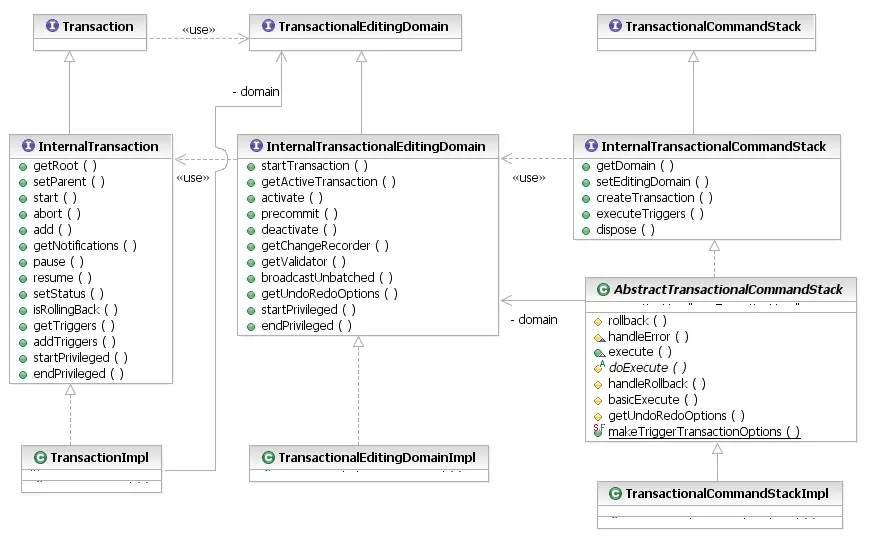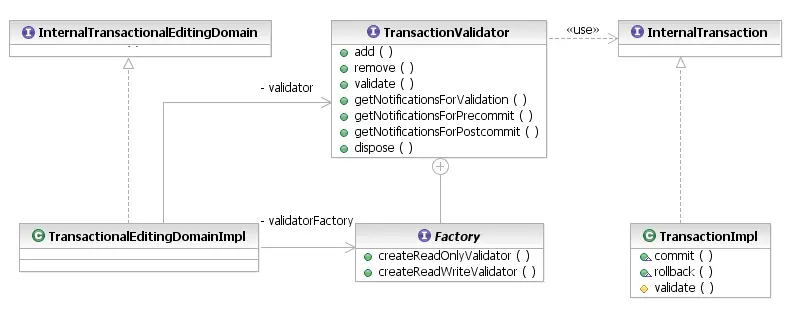Clients that have special requirements in the management of transactions can extend
virtually all aspects of the transactional editing domain API. As is usual in EMF, the
transaction API defines a number of InteralXyz interfaces
corresponding to the interfaces that are intended for public consumption. A valid editing
domain implementation must implement the
InternalTransactionalEditingDomain
interface, a transaction the
InternalTransaction
interface, and a command stack the
InternalTransactionalCommandStack
interface. Of course, it is highly recommend to extend the default implementations of all
of these interfaces.

[
as SVG]
The InternalTransactionalEditingDomain interface specifies the
transaction lifecycle API, from activating a transaction through to deactivating it,
with the intermediate stage of processing pre-commit listeners and executing their
trigger commands on the InternalTransactionalCommandStack.
The editing domain also keeps track of which of possibly numerous transactions in a
nested structure on one or more threads is currently active, and implements the transfer
of ownership from one thread to another in the
privileged runnable
mechanism.
Transaction Validators
The TransactionalEditingDomainImpl class has an associated
Factory
for the construction of
TransactionValidators.
For each root-level transaction that the editing domain activates, it uses its factory to
create a validator that will validate the transaction when it commits, as well as tracking
the notifications that will be sent to pre- and post-commit listeners. There are two kinds
of validator: read-only and read/write, according to the nature of the transaction.

[
as SVG]
Extensions of the editing domain may install their own validator factories to customize
their validators to set different options using the EMF Validation Framework's live
validation API. For example, a client may want set specific constraint filters or provide
arbitrary client-specific data to validation listeners. See the EMF Validation Framework
documentation for details.
Copyright (c) 2006, 2007 IBM Corporation and others. All Rights Reserved.
